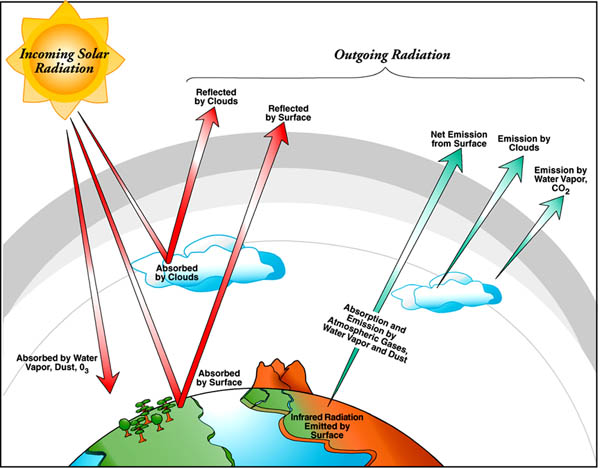
The Solar Radiation Monitoring Station
What Is SoRMS
The Solar Radiation Monitoring Station (SoRMS) project is one of Humboldt’s Renewable Energy Students Union’s (RESU) responses to the need for more renewable energy. The basic idea behind this specific system is not to create power but to collect information on solar power. As demonstrated in the photo above, the usable Solar Radiation is more complicated than simply what the sun emits. The atmosphere in which the radiation travels through needs to be taken into account due to it's distorting effects on usable energy at the surface.
Because of the localized weather in coastal zones, most solar research facilities do not deal with the thick cloud cover found there. The focus of the SoRMS project is to collect local solar radiation data and make that data available to the public. Although conducted in Arcata on the Northern Coast of California the SoRMS project is producing data that will help to fill in the informational gap for other areas with similar atmospheric conditions. In this manner SoRMS is contributing to a more comprehensive idea of the energy that can be expected from solar systems. With measurements of local solar energy people will have a better idea about solar powers productivity in areas that deal with more clouds and fog. This information can be used to help determine solar array sizing, battery storage requirements, and project payback.
How The Project Works
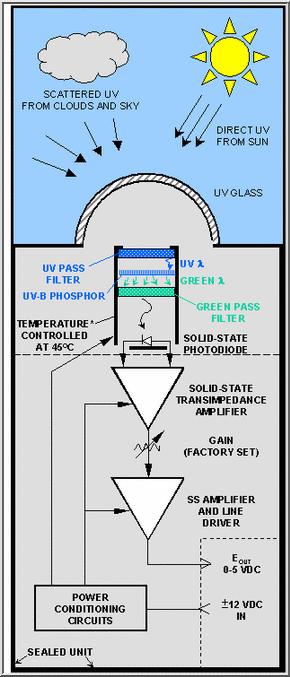
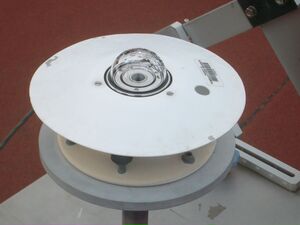
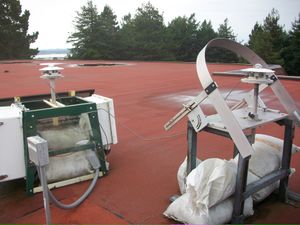
The amount of energy coming from the sun is measured with the use of an Eppley Precision Spectral Pyranometer (PSP) seen in the upper left photo. This is done by comparing the heat absorbed through radiation of an absorptive black surface and a reflective surface. There are two of these PSP’s, one is in the open sunlight and one is covered by what is called a shadow band. The shadow band is seen bent around the PSP on the right of the photo to the lower left, and is only blocking the direct sun light.
The PSP that is exposed to direct sunlight measures what is called global radiation. This global radiation is a composition of direct radiation, coming straight from the sun directly to the PSP and the diffuse radiation which is other light waves that have been bounced, bent, or reflected though the earth’s atmosphere. The illustration to the right may help to clarify this. The second PSP, with the shadow band blocking the direct radiation, only receives diffuse radiation. By using the data from each of these PSP’s, the diffuse radiation is subtracted from the global radiation to obtain the amount of direct radiation which is the primary source of solar energy.
How To Access Information
The data that SoRMS produces is collected by a Campbell ScientificCR510 data logger, and connected to the internet using a NL-100 Network Link Interface. With this Network Link Interface, the information collected by the SoRMS project is now promptly accessible to the public as Daily Charts and in a Calendar View. It also allows the National Renewable Energy Laboratory access to download SoRMS data remotely which also has a link to the data. Below is the graphical interpretation of a day's data.
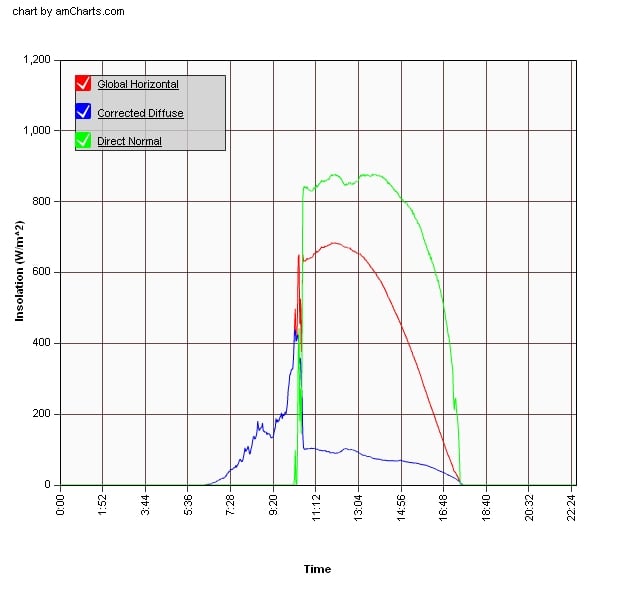
How SoRMS Is Run
The SoRMS project is run by California's Humboldt State University (HSU), Renewable Energy Student Union (RESU) which collaborates with the Schatz Energy Research Center. All the people working to keep this project running are volunteers. These volunteers keep the information as accurate as possible by maintaining the systems continuity. Seen below is some of the integral people who keep this project going. From left to right, the names are:(Top row) James Robinson, James Apple, Peter Johnstone, Heidi Benzonelli, Andrea Allen, Ranjit Deshmukh, Colin Sheppard, Lucas Siegfried, Arne Jacobson (Bottom row) Kristen Radecsky , Juliette Bohn
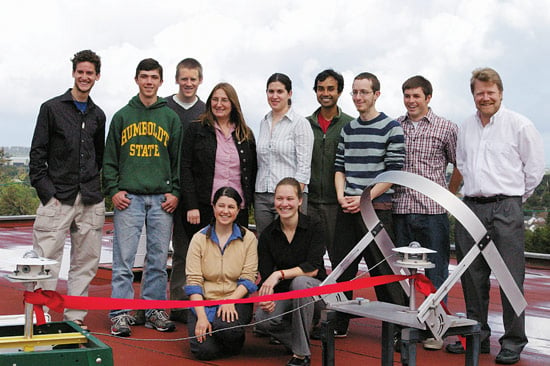
Maintaining The Project
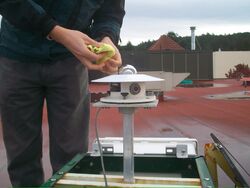
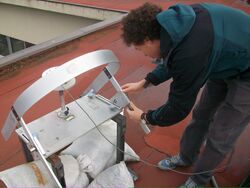
To keep this information consistent every morning one of the RESU volunteers clears the PSP’s of any dew accumulation (seen left) and adjusts the shadowband (seen right). This dew accumulation can cause short term spikes and holes in the energy absorption due to the light bending as it passes through dew droplets. [[1]]. The Shadowband is adjusted year round in relation to the earths rotation and position of the sun. [[2]]. The whole system is powered by solar panels, eliminating operation costs and replacing the need to be attachment to a power grid.
Funding Required
Because this project is maintained by volunteers, the only funding required is to cover the costs of shipping the PSP’s to the National Renewable Energy Laboratory for recalibration which is done about every two years. However the system exists today only because of the initial support of the HSU Sponsored Programs Foundation, the National Renewable Energy Laboratory, Redwood Alliance, Schatz Energy Research Center, HSU's Environmental Resources Engineering department, HSU Plant Operations, Marty Reed - HSU Equipment Technician, and the HSU library staff. [3]
Future Projects
The SoRMS project has been completed, however there are some improvements that would take care of the issues found in the system. With these issues fixed, the SoRMS project would also become able to collect data for the National Renewable Energy Laboratory(NREL). There are two problems within the operating system, one is the lack of a backup PSP. Every two years the Eppley Precision Spectral Pyranometers have to be sent back to the National Renewable Energy Laboratory for recalibration. This process takes two monthes, putting the data logging on hold for that period of time. The proposed solution is to purchase another PSP, making it possible to have a continuos data log at all times throughout the year.
The next issue with the SoRMS project is its lack of direct access by the NREL. With a direct link to NREL, the SoRMS project would be able to become a primary solar monitoring site. A "primary site" is what the NREL calls the various locations from where they get their national data. The SoRMS project provide data for California's North Coast, an area that the NREL does not have any measured data. There are two proposed solutions for this problem. The first solution is to set up a radio transceiver/receiver and antenna to transmit the data to another location with internet access. From the receiving location, the data would be sent to NREL. The alternative to this is to install an ethernet jack on the library roof, and transmit the information directly from SoRMS. This solution is the preferred solution, as it involves less variables to slow down relaying data.